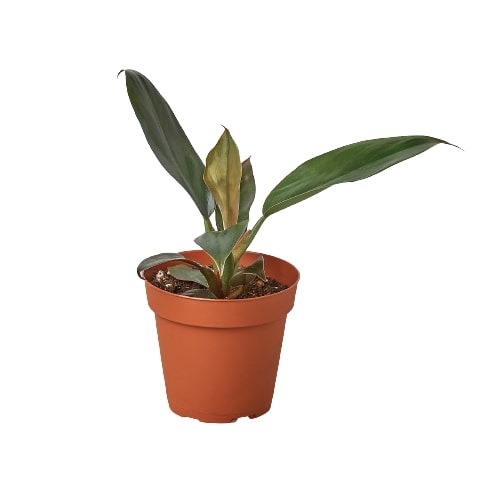Philodendron 'Black Cardinal'
Couldn't load pickup availability
Philodendron 'Black Cardinal' is a stunning, low-growing cultivar known for its striking dark foliage. As the leaves mature, they transition from a bright coppery hue to deep burgundy or almost black, making it a dramatic addition to any indoor plant collection. This variety is particularly sought after for its robust, glossy leaves and its ability to add a touch of sophistication to indoor spaces. The 'Black Cardinal' is relatively easy to care for, sharing the resilience and adaptability of the Philodendron genus.
🌿 Botanical Name: Philodendron 'Black Cardinal'
💧 Care Level: Easy to moderate. This plant is quite adaptable but will show its best coloration and growth with proper care.
📏 Size: In a 4" pot, it will be a young plant. As it matures, it can grow up to 2-3 feet (60-90 cm) in height and spread, with individual leaves growing large if given enough space and care.
☀️ Light: Prefers bright, indirect light. Too much direct sunlight can scorch its leaves, while too little light may cause the plant to become leggy and lose some of its vibrant dark coloration.
💧 Water: Water when the top inch (2.5 cm) of soil feels dry to the touch. Philodendron 'Black Cardinal' prefers evenly moist soil but is susceptible to root rot if overwatered, so ensure the pot has good drainage.
💦 Humidity: Enjoys moderate to high humidity but is quite adaptable and can thrive in average household humidity levels. If the air is very dry, consider using a humidifier or placing the plant on a pebble tray to increase humidity.
🌡️ Temperature: Thrives in average room temperatures, ideally between 65°F to 85°F (18°C to 29°C). Protect it from drafts and avoid exposure to temperatures below 50°F (10°C).
🌱 Soil: Use a well-draining, peat-based potting mix. Incorporating perlite or vermiculite can improve drainage and aeration, benefiting the plant's root health.
🌱 Fertilizing: Fertilize every 4-6 weeks during the growing season (spring and summer) with a balanced, water-soluble fertilizer, diluted to half strength. Reduce feeding in the fall and winter.
🔄 Pruning: Pruning is generally not necessary for the health of the plant but can be done to remove any yellowing or damaged leaves and to maintain the desired shape and size.
🍃 Pests and Diseases: Watch out for common pests such as spider mites, mealybugs, and aphids. Proper care and regular inspections can help prevent most pest and disease problems. Overwatering can lead to root rot, so ensure proper watering practices.
Propagation: Can be propagated through stem cuttings. Take a cutting with at least one leaf and a node, and root in water or moist potting mix. Keep the soil lightly moist and provide bright, indirect light until the cutting has rooted.


Philodendron 'Black Cardinal'

